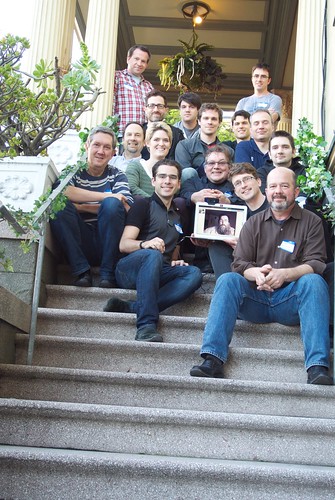The Mac Pro is an aging platform, but it’s not clear what will replace it. It’s still a beautiful and powerful system (have you ever looked INSIDE one of those things?), but I agree that it’s sure to be replaced soon. But by what?
The clue is in Thunderbolt, the new ultra-fast connection standard Apple has adopted and that Intel is pushing on computer manufacturers. At NAMM, there were several companies showing powerful Thunderbolt peripherals, and many others quietly talking about future capabilities with this new interface.
But I think Thunderbolt will be more than just a replacement for Firewire and USB. It is a flexible and powerful interface, and very fast.
In personal computers and workstations, there are three main classes of connection between subsystems. The main processors have an extremely fast connection to memory. The graphics is connected by a slightly slower connection that is a multi-channel PCIe interface. Internal and external storage and other devices are then connected by the next class of interfaces, such as SATA, eSATA, Firewire, USB and Ethernet.
Without getting into too much detail, Thunderbolt can be described as a small external PCIe connection combined with a Display Port. A computer could have several of these, and the total I/O bandwidth available would be enough to feed most of the data transfer needs of the most demanding user. Audio and video folks are salivating over the possibilities!
Back to the Mac Pro. This is a large system. It’s huge! Multiple drive bays; multiple internal slots for video cards and other expansion. But I contend that with Thunderbolt, this kind of large monolithic system is no longer the right way to configure a top-performing computer.
When you have multiple external interfaces that are very fast, you can build a system that only contains those things that need to be inside, right next to the processor.
Think of a new class of Mac Mini — a small computer built to be a powerhouse of compute power and memory, with multiple external Thunderbolt connections for the expansion required by professionals. If they can engineer the cooling, a very small computer, maybe only a little bigger than those external drives on my desk, could hold the processors, memory and graphics, and perhaps one system drive (likely an SSD). Everything else would be external, connected by multiple Thunderbolt ports.
What tradeoffs would they have to make to build this? Some pros would cry over the loss of internal slots. Could external slot expansion perform well enough?
Could this concept also be extended to a new Macbook Pro with multiple Thunderbolt ports? I love the idea of a light, fast laptop that transforms into a powerful workstation when connected into a desktop rig of external monitors, storage, and even specialized processing systems (maybe for audio and video).


